Brunost is a unique and delicious food product that has been enjoyed in Norway for centuries. In this blog post, we’ll explore its history and production, as well as its flavour and serving suggestions. Read on to learn more about this beloved Norwegian food.
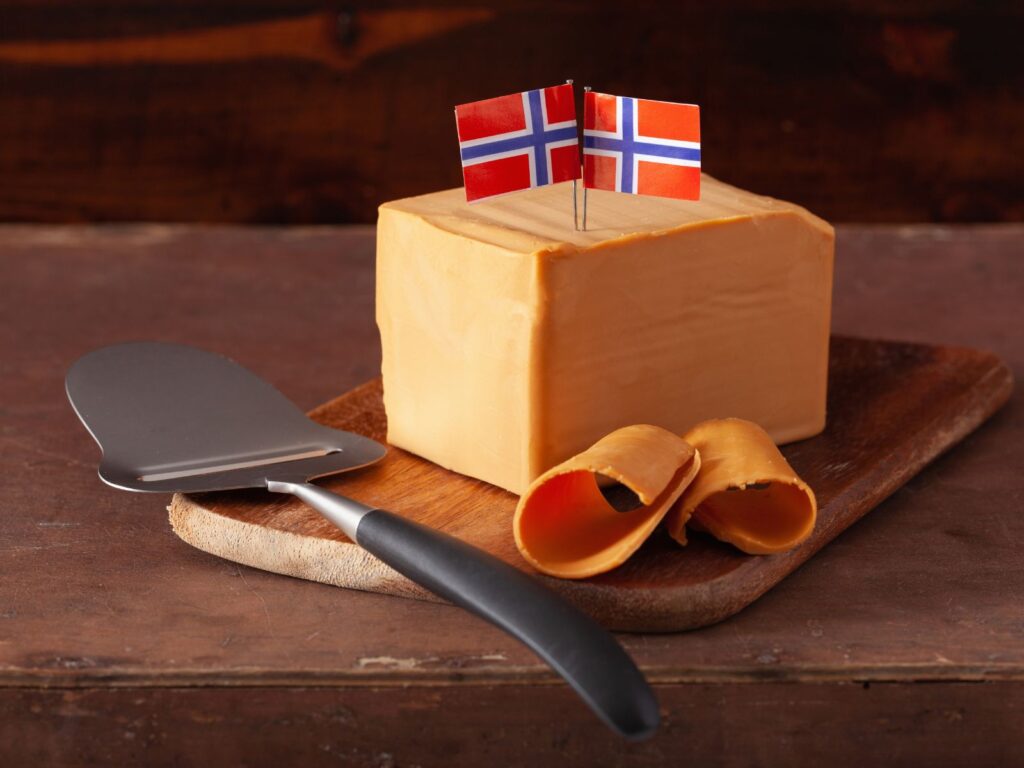
SEE ALSO: The world’s most underrated commercial cheeses →
What is Brunost?
Brunost, which translates to “Brown Cheese” in English, is a traditional Norwegian food product made from whey. It has a distinctive brown colour and a caramel-like flavour.
Unlike most cheeses, which are made from milk, this Norwegian treasure is made by boiling the whey left over from the production of other cheeses until it caramelises.
History of Brunost
Brunost is a unique food product that has been a staple in Norwegian cuisine for over 150 years. Indeed, its origins can be traced back to the 1860s when a farmer named Anne Hov in Gudbrandsdalen, Norway, decided to experiment with using whey instead of milk to make cheese.
By cooking and caramelizing the whey, she was able to create a sweet and nutty food that was unlike anything else.
Subsequently, Brunost’s popularity quickly spread throughout Norway. And by the turn of the 20th century, it had become a national symbol of Norwegian cuisine. During World War II, Brunost was even used as a means of currency, as it was highly prized and difficult to come by.
Today, Brunost is still a beloved food in Norway, and there are many different varieties and brands available. While it may not be as well-known outside of Norway, “Brown Cheese” remains an important part of the country’s culinary heritage and continues to be enjoyed by Norwegians of all ages.
How to make Brunost
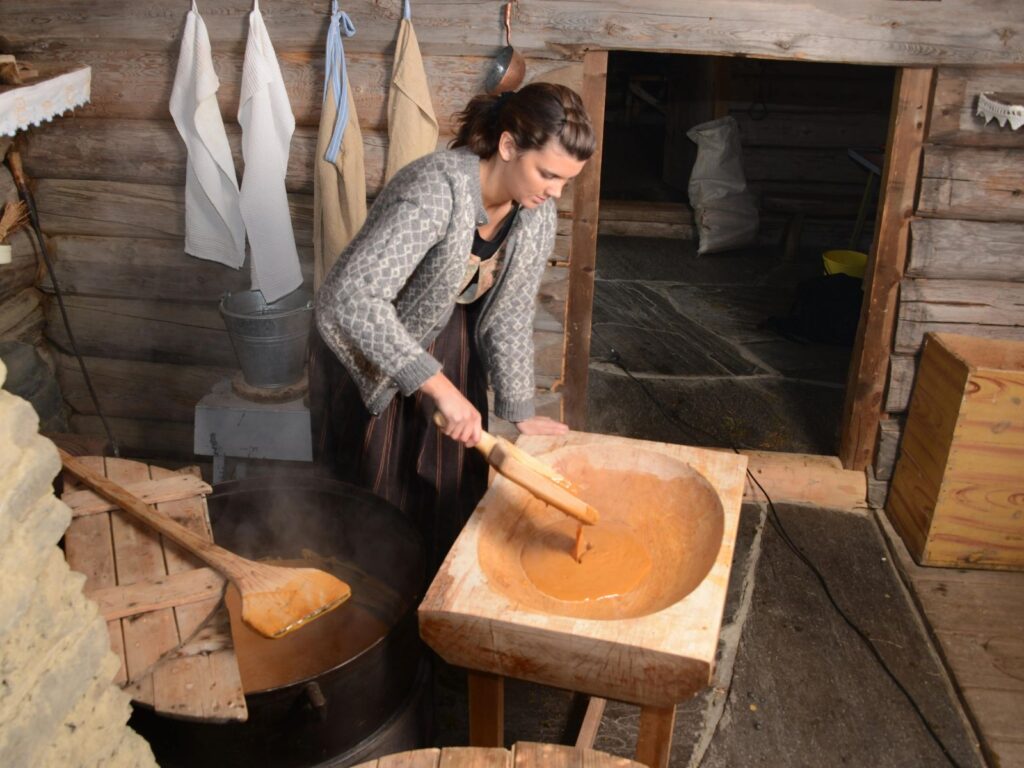
Traditional production of “Brown Cheese” starts with whey from cow’s milk. And it involves a lengthy process of heating and stirring the whey until it caramelizes and thickens into a smooth and creamy texture.
Here are the steps involved in the traditional production of Brunost.
Whey collection: Collect the whey from the production of another type of cheese, such as Gouda or Jarlsberg.
Heat the whey: Next, heat the whey in a large pot over a low flame, stirring constantly to prevent it from burning.
Add cream: As the whey heats up, cream is added to create a richer flavour and texture.
Heat the mixture: Continue heating the mixture until it thickens and caramelises, turning a deep brown colour and taking on a sweet, nutty flavour.
Transfer to mould: Once the whey has reached the desired consistency, pour it into moulds and allow to cool.
Refrigerate: The cooled Brunost is then wrapped in foil and stored in the refrigerator.
As you can see, its traditional recipe is quite time-consuming and labour-intensive. Therefore, some modern producers tend to use shortcuts or alternate methods. Having said that, most Norwegians still prefer the traditional recipe for its authentic flavour and texture.
Is it real cheese or not?
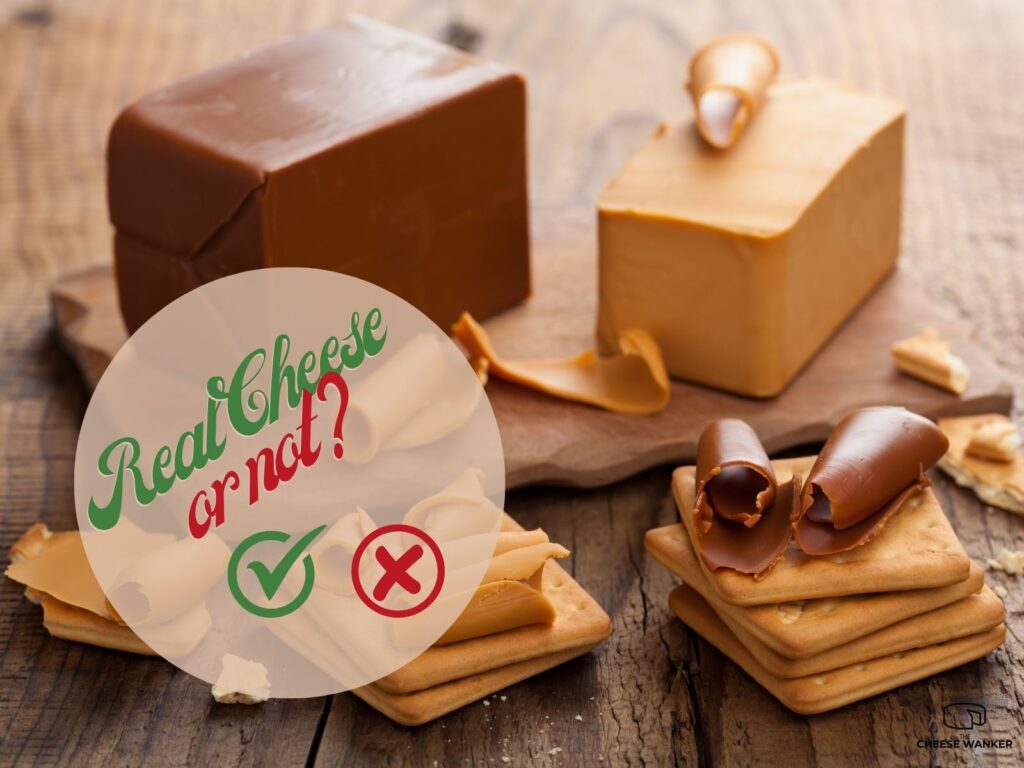
There has been some debate among cheese enthusiasts over whether Brunost can truly be classified as a cheese. This debate stems from its production process and the ingredients used.
We put this Norwegian food to the Official Cheese Definition Test and you can read Brunost’s Scorecard by clicking here.
Different types of “Brown Cheese”
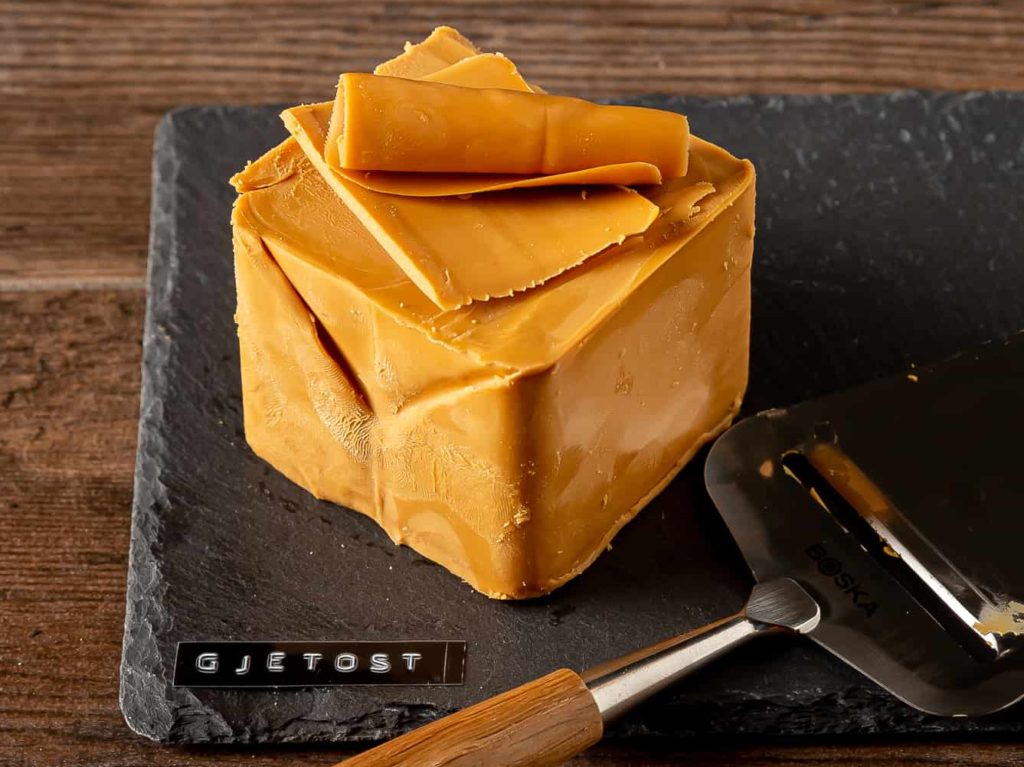
There are several varieties of Brunost, each with its own unique flavour. Gudbrandsdalsost is the most popular variety, but there are also other types.
Two examples are Ekte Geitost/Gjetost (made from goat’s milk whey) and Fløtemysost (higher cream content).
Aroma, texture and flavour
Brunost has a unique aroma, flavour and texture that sets it apart from other types of cheese. Here’s what you can expect when you taste and smell “Brown Cheese”:
Aroma: Brunost has a rich, caramel-like aroma with notes of butterscotch and toasted nuts. The aroma can be quite strong, especially with aged varieties.
Flavour: Moreover, it has a sweet and nutty flavour with a hint of caramel. Actually, it is not as tangy or salty as many other types of cheese. And its sweetness is balanced by a subtle bitterness.
Texture: “Brown Cheese” has a smooth and creamy texture that is softer than many other types of cheese. It has a slightly sticky feel in the mouth, with a pleasant chewiness that makes it easy to eat.
The flavour and aroma of Brunost can vary depending on the type of whey used, the cooking time and temperature. Some varieties may have a more intense savoury flavour, while others may be milder and sweeter.
Is Brunost healthy?
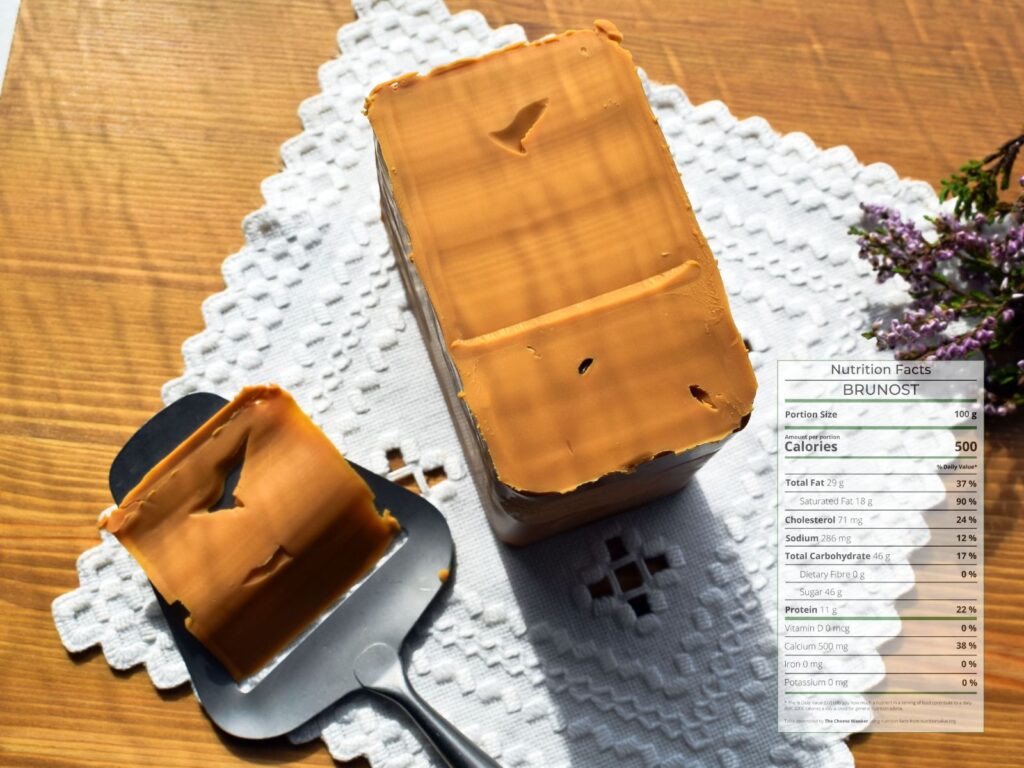
Without a doubt, Brunost is a staple in Norwegian cuisine. But is it actually healthy?
“Brown Cheese” is safe to consume during pregnancy as long as it is made from pasteurised whey. However, people with lactose intolerance should exercise caution when consuming Brunost. Due to the ingredients used in its production, it is very likely to cause discomfort to even mildly lactose intolerant people.
You can read our in-depth assessment of the nutrition facts for Brunost by clicking here.
How to eat Brunost like the Norwegians
There are many ways that Norwegians enjoy this unique food. Indeed, you can serve it on bread or crackers. Or use it to top warm pancakes or waffles (we’ll tell you more about this one a bit later). Also, it pairs well with fruit, particularly apples and pears, and is often served with coffee or tea.
In addition to this, the Norwegians use Brunost in a variety of recipes, from savoury to sweet. Here are some of the best ones:
Hjertevafler (Norwegian Heart-Shaped Waffles)

This popular Norwegian breakfast dish uses Brunost in the batter. The waffles are made by combining flour, baking powder, eggs, milk and melted Brunost.
Then you cook the mixture in a waffle iron until golden brown. They are often served with jam or sour cream.
Brunost Bløtkake (Layered Cream Cake)
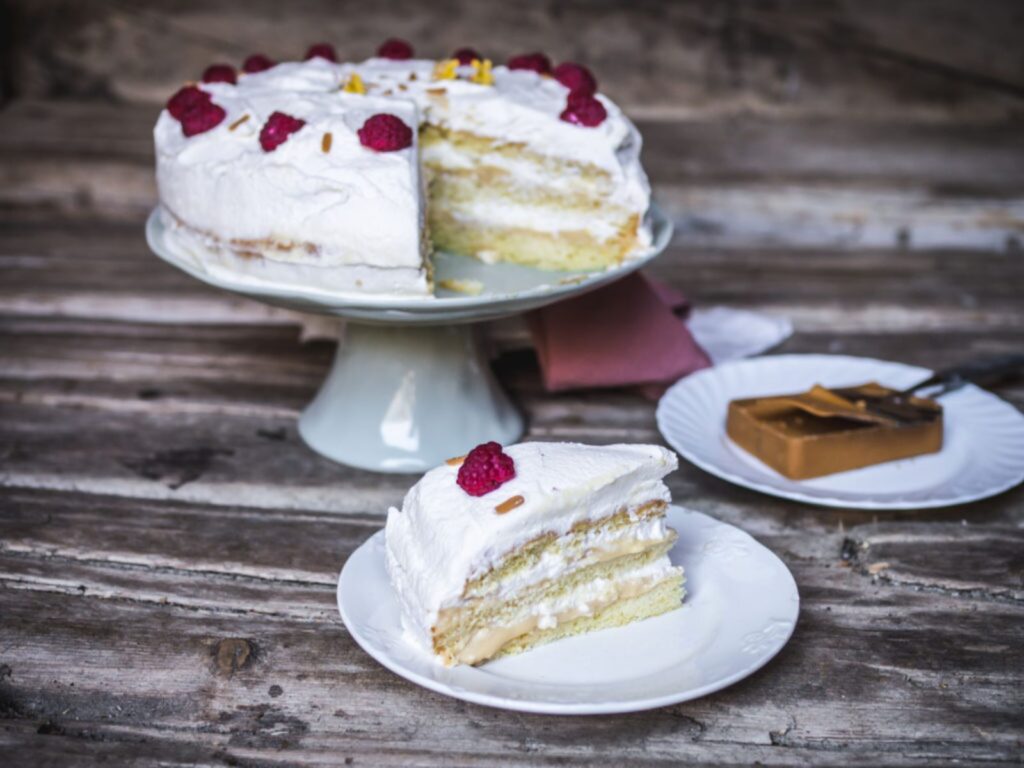
Bløtkake is a traditional Norwegian cake made with layers of sponge cake, whipped cream and Brunost. It is typically decorated with fresh berries or fruit and served as a dessert for special occasions.
The combination of sweet and slightly salty flavours in the “Brown Cheese” makes this cake a unique and delicious treat.
You can find the complete recipe by clicking here.
Kjøttkaker (Norwegian Meatballs with Brunost Sauce)
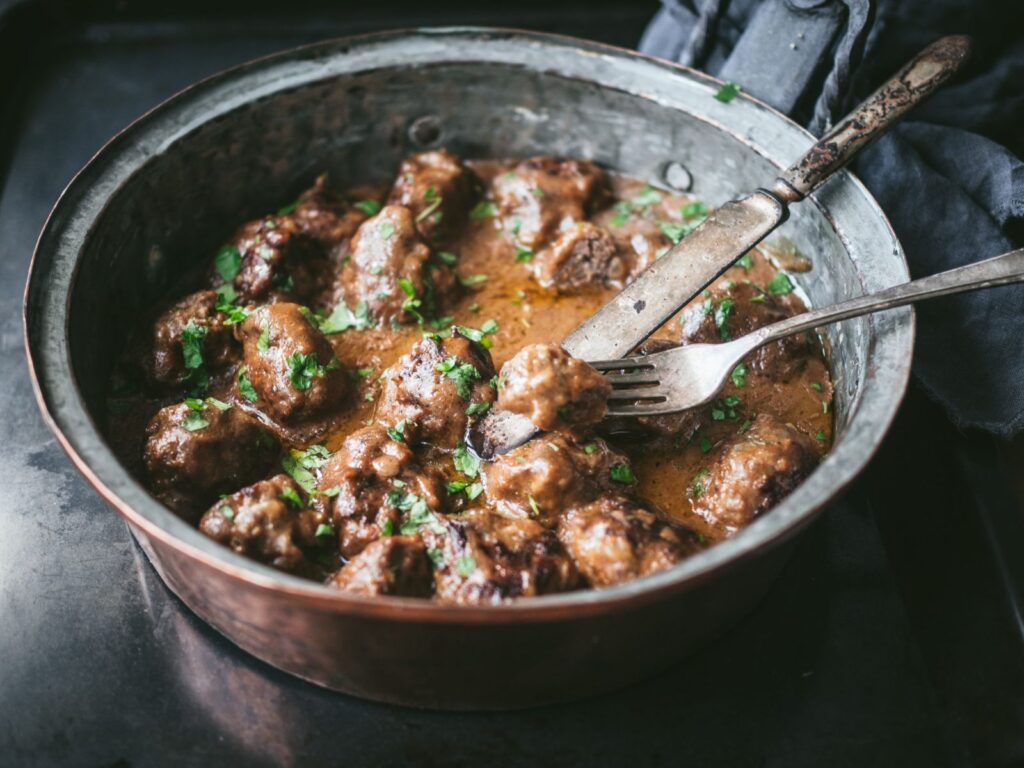
Kjøttkaker is another traditional Norwegian dish that features Brunost in the creamy sauce. The meatballs are made with ground beef or pork mixed with breadcrumbs, egg, milk and spices.
And the locals serve it with a rich and creamy Brunost sauce made by melting the “Brown Cheese” with cream and beef broth.
You can find the complete recipe by clicking here.
Alternatives to Brunost
If you really enjoy this Norwegian icon and want to try similar foods, here are three alternatives:
Gjetost: This version is made using goat milk whey. Overall, its texture is similar to Brunost but it is slightly lighter in colour. And its flavour is slightly nuttier with hints of butterscotch.
Primost: A traditional Norwegian food that is made by cooking whey until it becomes caramelised. But unlike Brunost, you cook the whey for a shorter time. It has a sweet and slightly tangy flavour and is often served with bread or crackers.
Messmör: This traditional Swedish spreadable food product is made by cooking whey until it becomes caramelised and then mixing in butter. It has a sweet and slightly tangy flavour and is also commonly used as a topping for bread or crackers.
Brunost FAQs
Let’s wrap up with some of your most frequently asked questions about Norwegian “Brown Cheese”.
How do you pronounce “Brunost”?
In Norwegian, it is pronounced “broo-nost.”
Is Brunost lactose-free?
Since it is made from whey (and sometimes cream), Brunost is not a great option for lactose intolerant cheese lovers.
Is Brunost gluten-free?
Yes, “Brown Cheese” is typically gluten-free as it does not contain any wheat, barley or rye.
How is Brunost stored?
You should store it in the refrigerator and wrap it tightly in plastic wrap or wax paper to prevent it from drying out.
Can it be frozen?
Yes, you can freeze Brunost, but this might change its texture and flavour. Hence, we wouldn’t recommend it.
Can you make it at home?
Yes, it is possible to make it at home using whey and cream or milk, but it can be a challenging process and requires a lot of patience.
Where can I buy Brunost?
Brunost can be found in specialty cheese shops and some grocery stores in Norway, as well as in some international markets and online retailers.
Summary
Brunost is a unique and delicious food product that has been enjoyed in Norway for generations. Its caramel-like flavour and smooth texture make it a favourite among foodies around the world.
Whether you prefer it on its own or as an ingredient in your favourite recipe, this Norwegian gem is sure to delight your taste buds. How do you like to eat Brunost? Let me know in the comments.
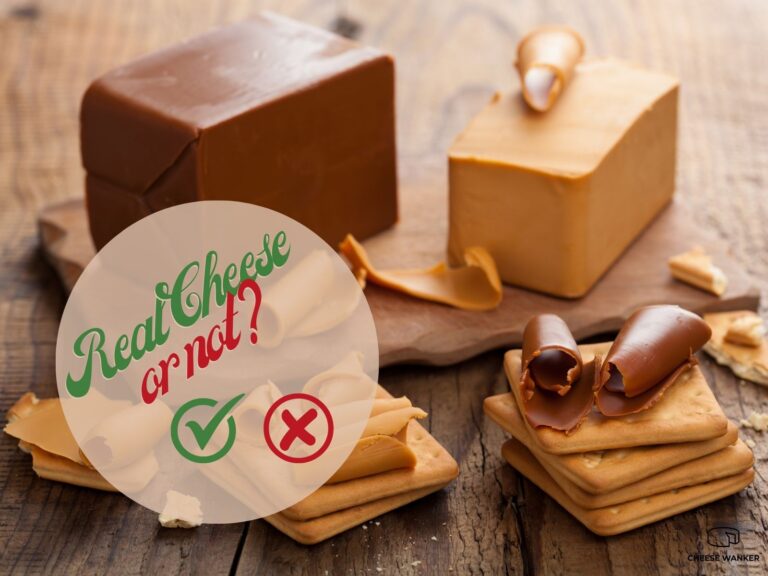
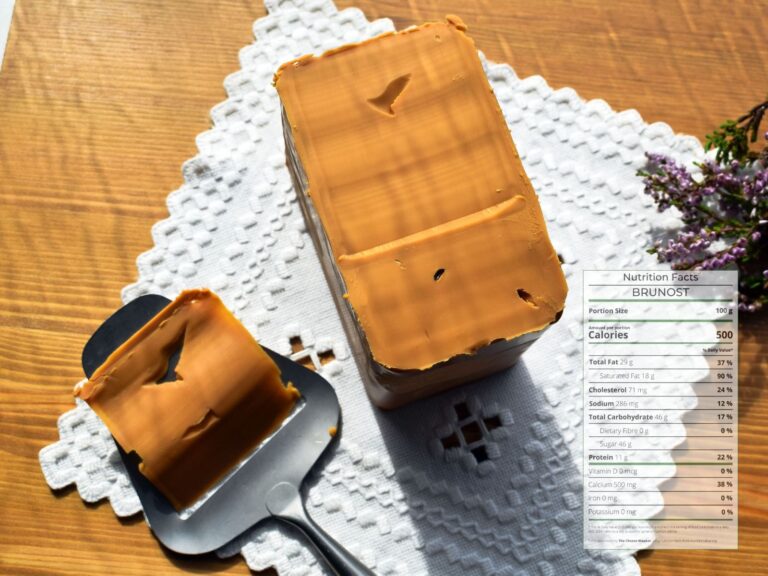
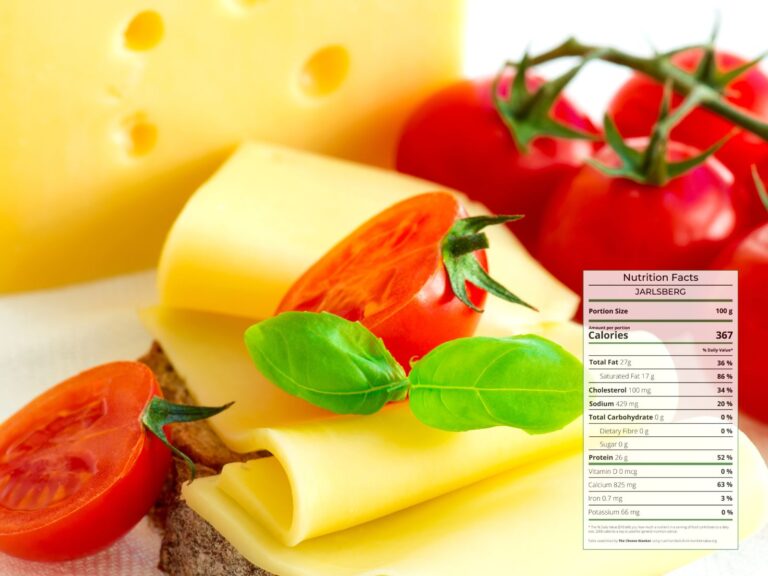
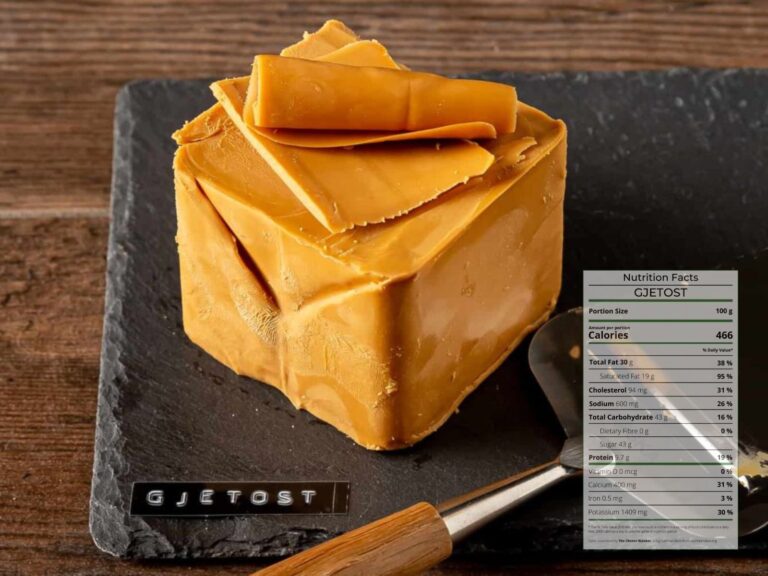
Thanks for sharing.
Quite original way of cheese prep. 🙏
Thank you for reading our post on Brunost and leaving a comment. This is indeed a unique “cheese” from Norway.
Fabulous 👌